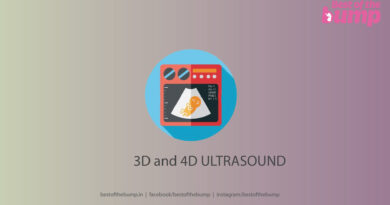Safe Driving in Pregnancy for Expectant Mothers
Adjusting Your Seat and Steering Wheel
Proper seating and steering wheel adjustment are crucial for comfort and safety during pregnancy. Follow these steps to ensure a comfortable driving position:
- Seat Position: Adjust your seat so you can comfortably reach the pedals while maintaining a slight knee bend. Avoid sitting too close to the steering wheel to minimize the risk of injury from airbag deployment.
- Steering Wheel: Tilt the steering wheel to a comfortable height and distance that allows you to grip it with your hands comfortably. Avoid a position where your belly is too close to the steering wheel.
- Lumbar Support: If your car has adjustable lumbar support, use it to maintain good posture and reduce back discomfort.
Seatbelt Safety
Wearing a seatbelt is essential for both you and your baby’s safety. Follow these seatbelt safety guidelines:
- Proper Placement: Place the lap belt below your belly, across your hips, and snugly against your upper thighs. The shoulder belt should rest diagonally across your chest and over your shoulder, away from your neck.
- Avoid Belt Slack: Ensure there’s no slack in the seatbelt, as this can increase the risk of injury during a crash.
- Regularly Adjust: As your pregnancy progresses, you may need to adjust the seatbelt placement to maintain comfort and safety.
Airbag Precautions
Airbags are designed to enhance safety but can be a concern during pregnancy due to the risk of injury from the force of deployment. Here’s how to take precautions:
- Positioning: Sit as far back from the steering wheel as possible while still maintaining control of the vehicle. The ideal distance is at least 10 inches between your breastbone and the steering wheel.
- Steering Wheel Tilt: Tilt the steering wheel downward to direct the airbag toward your chest instead of your belly.
- Seatback Angle: Keep the seatback as upright as comfortably possible to minimize the distance between you and the airbag.
Regular Maintenance Checks
Maintaining your vehicle is crucial to ensure it operates safely throughout your pregnancy. Regular maintenance checks should include:
- Brakes: Ensure your brakes are in good condition to guarantee effective stopping power.
- Tire Pressure: Check and maintain proper tire pressure to prevent blowouts and ensure a smoother ride.
- Lights and Signals: Ensure all lights, including headlights, taillights, and turn signals, are functioning correctly.
- Fluid Levels: Regularly check and top up essential fluids, such as engine oil, transmission fluid, brake fluid, and coolant.
- Suspension and Steering: Make sure your vehicle’s suspension and steering components are in good working order for stability and control.
By following these safe driving practices tailored to expectant mothers, you can significantly reduce the risks associated with driving during pregnancy and ensure a safer and more comfortable experience on the road. Remember, your safety and the safety of your baby should always come first when you’re behind the wheel.
Long-Distance Travel and Road Trips
Taking a road trip during pregnancy can be a memorable adventure, but it also requires careful planning and consideration of your comfort and safety. In this chapter, we’ll explore essential aspects of long-distance travel and road trips while expecting, including journey planning, frequent breaks, healthy snacking, and sleeping arrangements.
Planning Your Journey (Safe Driving in Pregnancy)
Before embarking on a long-distance road trip during pregnancy, thoughtful planning is crucial:
- Route Selection: Choose routes that offer accessible rest stops and facilities. Consider avoiding rough or remote terrains that may cause discomfort.
- Travel Companion: Having a travel companion can be reassuring and practical. They can assist with driving, and navigation, and offer support when needed.
- Itinerary: Create a flexible itinerary that accounts for rest breaks, meals, and overnight stays. Don’t overcommit to long hours on the road.
- Healthcare Stops: Identify healthcare facilities along your route, just in case you need medical assistance.
- Emergency Kit: Pack an emergency kit with essential supplies, including medications, first-aid items, and contact information for your healthcare provider.
Frequent Breaks and Stretching (Safe Driving in Pregnancy)
Pregnancy increases the risk of discomfort during extended periods of sitting. To alleviate this, follow these guidelines:
- Regular Stops: Plan for frequent breaks, ideally every 1-2 hours, to stretch your legs, walk around, and use restroom facilities.
- Stretching Exercises: Perform simple stretching exercises at rest stops to reduce muscle tension and improve circulation. Focus on your legs, back, and neck.
- Hydration: Stay well-hydrated by drinking water throughout your journey, but avoid excessive fluid intake before bedtime to minimize nighttime bathroom breaks.
Healthy Snacking on the Go
Maintaining balanced nutrition is vital during pregnancy, even while on a road trip:
- Snack Options: Pack healthy, non-perishable snacks like nuts, dried fruits, whole-grain crackers, and granola bars.
- Avoid Junk Food: While it’s tempting to indulge in fast food while traveling, try to limit high-sugar and high-fat options.
- Meal Planning: Research restaurants or eateries en route that offer nutritious meal options. Opt for lighter, well-balanced meals.
Sleeping Arrangements
If your road trip spans multiple days, planning for comfortable sleeping arrangements is essential:
- Accommodations: Book accommodations in advance, ensuring they are pregnancy-friendly. Consider requesting a room with a comfortable bed and extra pillows.
- Sleep Schedule: Try to maintain a regular sleep schedule as much as possible, even while on the road. Adequate rest is crucial during pregnancy.
- Restful Stops: If you’re camping or using recreational vehicles (RVs), ensure your sleeping arrangements are comfortable and supportive for your changing body.
Long-distance travel and road trips can be enjoyable experiences during pregnancy with careful planning and attention to your comfort and well-being. By following these guidelines for journey planning, taking regular breaks, eating healthily, and arranging comfortable sleeping accommodations, you can make the most of your road trip adventure while ensuring a safe and enjoyable journey for both you and your baby.
Handling Emergency Situations
No matter how carefully you plan your journey, emergencies can still occur while driving during pregnancy. This chapter focuses on how to handle common emergency situations, including tire blowouts, brake failure, accidents, and the steps to take when dealing with roadside assistance.
Tire Blowouts and Flat Tires
Experiencing a tire blowout or flat tire can be unnerving, but staying calm and following these steps can help:
- Grip the Steering Wheel: Keep a firm grip on the steering wheel to maintain control of the vehicle.
- Avoid Sudden Movements: Do not slam on the brakes or make sudden steering adjustments. Gradually ease off the accelerator and guide the car to the side of the road.
- Turn on Hazard Lights: Activate your hazard lights to alert other drivers to the emergency.
- Assess the Situation: Once safely parked, assess the tire damage. If it’s a flat tire, consult your vehicle’s manual for instructions on using the spare tire.
Brake Failure
Brake failure is a rare but critical emergency. Knowing how to respond is crucial:
- Pump the Brakes: Attempt to pump the brakes to build up brake pressure. If this doesn’t work, move on to the next steps.
- Downshift Gears: Downshift to lower gears to slow down the vehicle. This can help control speed.
- Engage Emergency Brake: Gradually and carefully engage the emergency brake. Be prepared for the vehicle to skid.
- Steer to Safety: Try to steer the vehicle to a safe location, such as the shoulder of the road.
Accidents and Collisions
In the unfortunate event of an accident or collision, take the following steps:
- Check for Injuries: First, check yourself for injuries, then check others involved in the accident. Call 911 or emergency services if anyone requires medical attention.
- Exchange Information: Exchange insurance and contact information with other parties involved in the accident.
- Document the Scene: Take photos of the accident scene, damage to vehicles, and any relevant details. This can be helpful for insurance claims.
- Contact Your Healthcare Provider: Even if you feel fine, contact your healthcare provider to report the accident. They can provide guidance on necessary precautions.
Dealing with Roadside Assistance
When facing an emergency situation during pregnancy, roadside assistance can be your lifeline:
- Have a Plan: Before your trip, research and carry the contact information for roadside assistance providers, including your vehicle manufacturer’s assistance service.
- Stay Safe: If you’re stranded on the side of the road, stay in your vehicle with your hazard lights on and doors locked until help arrives.
- Communicate Clearly: When calling for assistance, clearly explain your situation, mention that you’re pregnant, and request expedited help.
- Share Your Location: Use GPS or share your location through your phone with the roadside assistance provider for quicker response times.
Knowing how to handle emergency situations while driving during pregnancy is crucial for your safety and the safety of your baby. By remaining calm, following these guidelines, and having a plan in place, you can navigate unexpected challenges on the road with confidence and composure. Remember to prioritize safety and seek medical attention if necessary, even for minor accidents or emergencies.
See This Also-
- Driving During Pregnancy: Safety, Risks, and When to Stop
- Olive Oil Recipes and Applications for Expectant Mothers
- Olive Oil During Pregnancy
- Can twins cause false negative pregnancy test?
- Is Diarrhea a Sign of Pregnancy?
- What is the Benefits & Side Effects of Olive Oil in Pregnancy?




